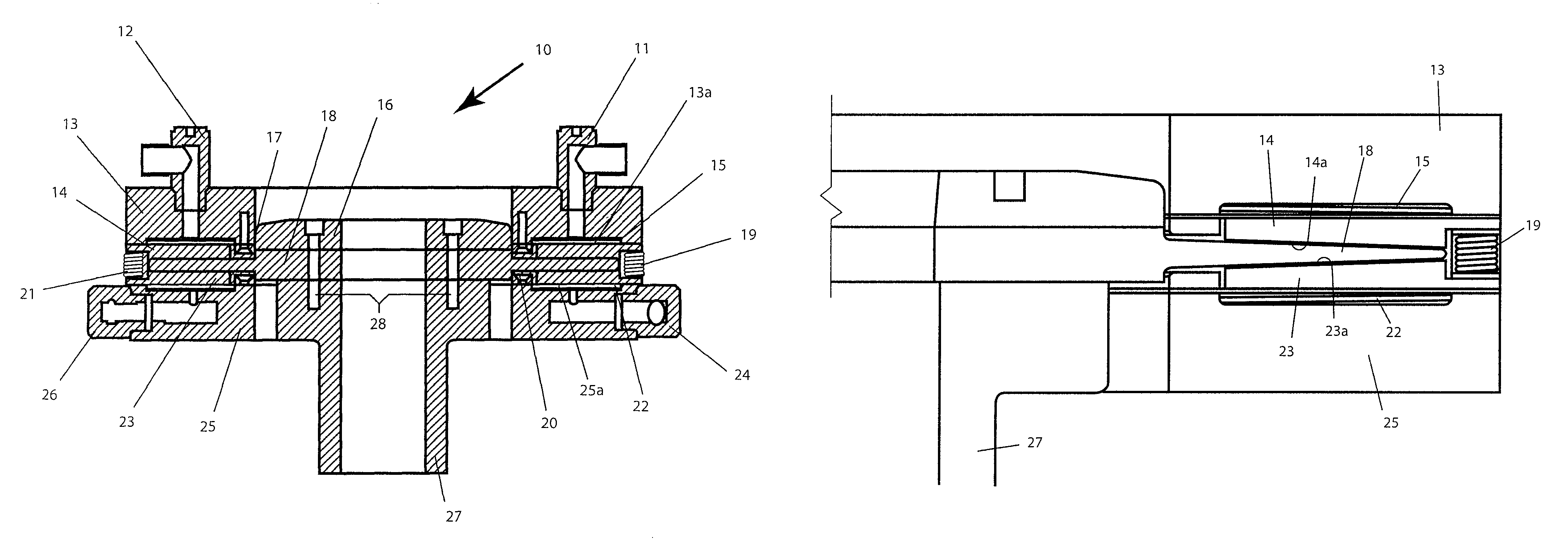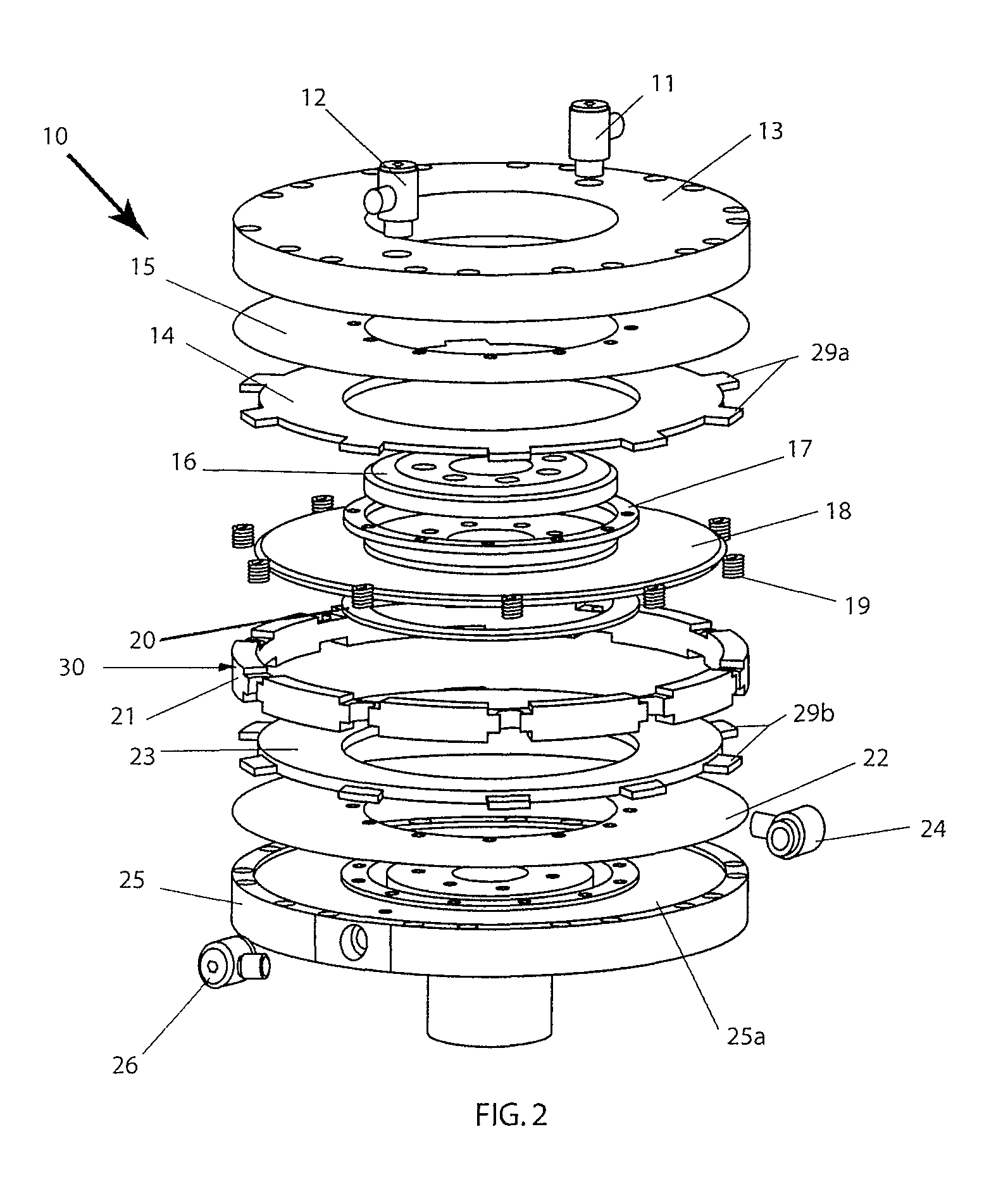Braking system for high speed and power rotating machinery
a technology of rotating machinery and braking system, which is applied in the direction of braking system, fluid actuated brake, transportation and packaging, etc., can solve the problems of large heat, damage or destruction of rotor and other energy storage device components, design and development efforts, etc., and achieve the effect of large braking force area, and inefficient hydraulic fluid characteristics
- Summary
- Abstract
- Description
- Claims
- Application Information
AI Technical Summary
Benefits of technology
Problems solved by technology
Method used
Image
Examples
Embodiment Construction
[0012]Referring to FIG. 1, there is shown a perspective, partially cutaway view of a brake system 10 in accordance with the principles of the present invention. FIGS. 2 and 3 are respectively exploded perspective and vertical sectional views of the brake system 10. FIGS. 4 and 5 are partial, enlarged sectional views of portions of the brake system 10 shown in FIG. 3.
[0013]The brake system 10 of the present invention includes a brake disc rotor 18 attached to a main shaft 27 as well as to a rotating body 50 by means of a retainer plate 16 and plural threaded bolts 28 concentrically disposed in a spaced manner about aligned center apertures in each of the retainer plate, brake disc rotor and main shaft. The brake disc rotor 18 is preferably comprised of a high strength, annular heat resistant composite material, such as carbon-carbon, and is disposed between first and second annular brake disc pads 14 and 23. Each of the first and second brake disc pads 14 and 23 includes respective p...
PUM
 Login to View More
Login to View More Abstract
Description
Claims
Application Information
 Login to View More
Login to View More - R&D
- Intellectual Property
- Life Sciences
- Materials
- Tech Scout
- Unparalleled Data Quality
- Higher Quality Content
- 60% Fewer Hallucinations
Browse by: Latest US Patents, China's latest patents, Technical Efficacy Thesaurus, Application Domain, Technology Topic, Popular Technical Reports.
© 2025 PatSnap. All rights reserved.Legal|Privacy policy|Modern Slavery Act Transparency Statement|Sitemap|About US| Contact US: help@patsnap.com



